A. To avoid splashing others with water
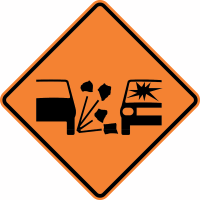 Why should you slow down when you see this sign?
Why should you slow down when you see this sign?
A. To avoid splashing others with water
B. Your tyres may suffer a blow-out
C. There is a road gritter ahead
D. To avoid throwing up loose chippings
The technology used in sealed roads has not improved enough to cope with the volumes and weight of traffic that we subject it to therefore road maintenance is an ongoing chore. When driving around roadworks, speed limits may apply – usually 30kph if there are people working there. In this article we’ll show you the road signs that you will encounter around roadworks, plus the common causes of roadworks in terms of asphalt or tarmac degradation.
The following road signs indicate that there may be people working on the road:
          |
The following road signs give you an idea of how long the roadworks extend along the road and whether they might affect your travel time significantly.
    |
The following road signs show that the road conditions or layout may have changed
 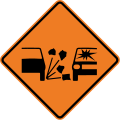   |
For larger roadworks there may be site access for machinery. This will be signposted. Be aware that works vehicles may slow down to pull in here.
  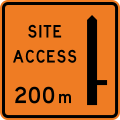 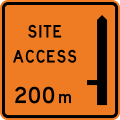 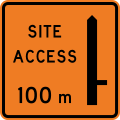 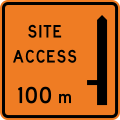 |
If there are roadworks that force a lane closure, then you may see one of these signs advising a lane is closed and you must merge, or that lanes deviate from their normal course.
               |
NZTA has a State Highway roadworks program which usually involves spreading stone chip over a layer of hot sprayed bitumen. City streets and motorways have a different asphalt mix, but all will end up with some or all of the following signs of fatigue.
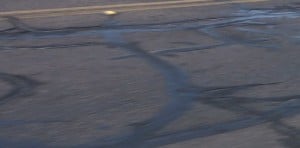
Large rectangular cracks appear on the surface. They are not necessarily deep and are actually made worse by low traffic volumes. If block cracking is premature the usual cause of it is human error: road workers place the mix too dry. It also happens when the road gets old. It can be fixed with a thin overlay, or special treatment of the crack.
 Settlement depressions are caused when the underlying base is compressed over time, or settles naturally. This causes lower areas in the tarmac where water can pool. If this water is deep enough it can cause problems with aquaplaning. Settlement depressions are low priority in terms of fixing.
Settlement depressions are caused when the underlying base is compressed over time, or settles naturally. This causes lower areas in the tarmac where water can pool. If this water is deep enough it can cause problems with aquaplaning. Settlement depressions are low priority in terms of fixing.
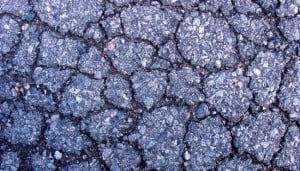
Alligator cracking consists of many small cracks that look similar to a reptile’s scales. It has many causes such as poor drainage, a thin or weak surface or base, or excessive heavy traffic. Small weaknesses in the surface quickly spread. The asphalt must be completely removed and replaced to its full depth.
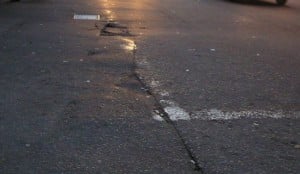
Tarmac is almost never laid in one sheet for the entire road width, and that means that there are joints. Longitudinal cracking is almost always caused by poorly constructed paving joints, and therefore mostly appear down the centre of the road. If there are large temperature variations during the day this will exacerbate the problem.
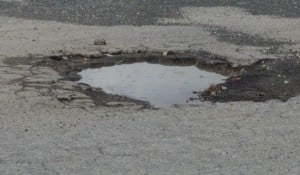
Once a small fracture or crack appears in the surface, water and other grit can get in and they begin to erode the edges. Frost and temperature changes accelerate the process. As the crack becomes wider, the effect of vehicle tyres crushes the edges and gradually the pothole becomes wider. Pieces around the edges become dislodged and removed by the action of vehicle tyres. They are usually repaired by filling them. Potholes can be deep enough to cause damage to vehicles, and they are dangerous for motorbikes.
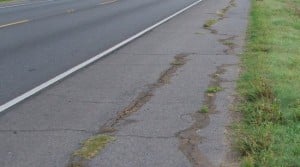
If there is an issue with subsidence on the edges of the roads, edge cracks will appear. It can be accelerated (or caused) by heavy traffic that uses the shoulders of the road such as agricultural machinery. If the road is bordered by vegetation such as grass, this will also break up the tarmac. A weak surface layer or base and poor drainage and/or frost will only make things worse.
Test your knowledge of road code signs by taking our free quiz here.